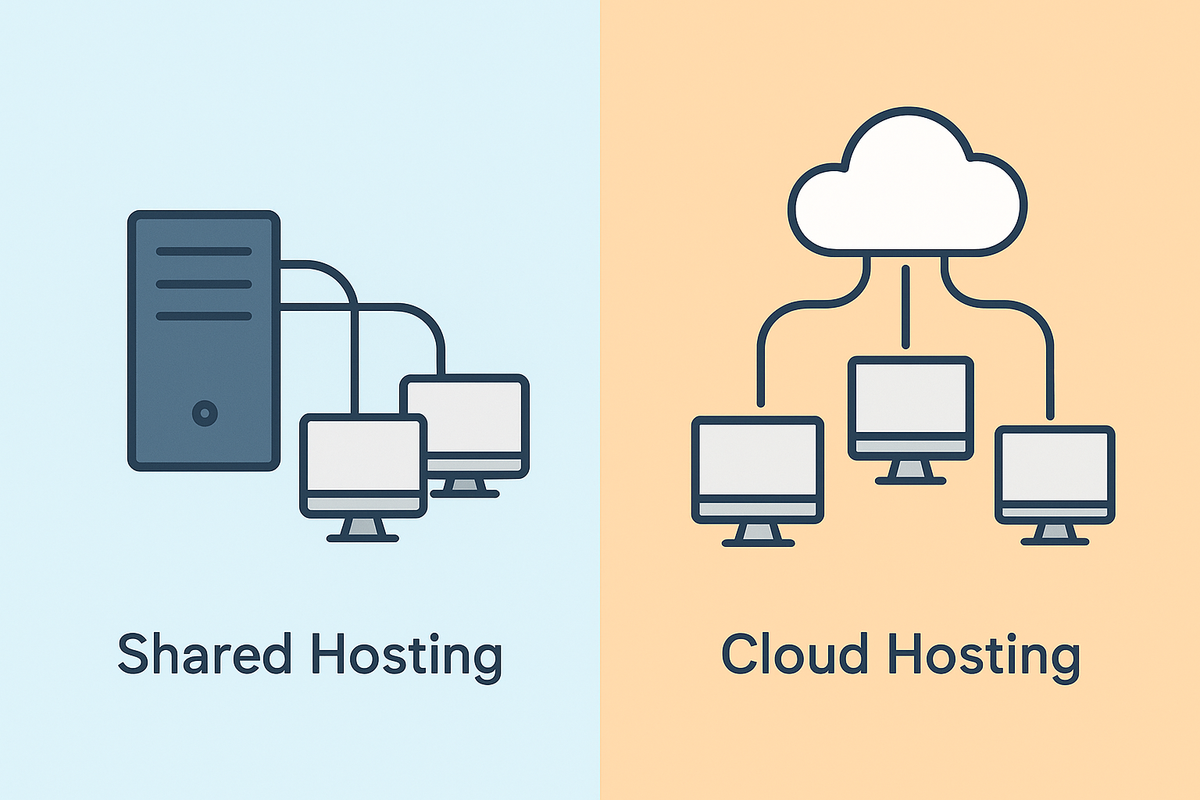Shared Hosting vs. Cloud Hosting: Which One Do You Need?

If you’ve started looking into web hosting, you’ve probably noticed there are dozens of options — and the jargon can get overwhelming fast. Two of the most common terms you’ll see are shared hosting and cloud hosting.
At first glance, they sound similar. After all, both are just ways to keep your website online. But behind the names are two very different approaches. One is like renting a small room in a busy building, while the other is more like having access to a whole network of houses you can expand into whenever you want.
So, which one should you choose? Let’s break it down together.
Shared Hosting: The Classic Starter Home
Shared hosting is usually where beginners start. The reason is simple: it’s cheap, it’s simple, and it just works.
When you sign up for shared hosting, you’re essentially moving into a big apartment building where hundreds (sometimes thousands) of other websites also live. Everyone shares the same main utilities: electricity, water, and internet. In the web hosting world, those utilities are server resources like memory, processing power, and bandwidth.
For someone just starting out, this setup makes sense. Most new websites don’t need a huge amount of power to run. A blog, a portfolio site, or a small business page can happily live on shared hosting without running into trouble.
But here’s the catch: because you’re sharing the server with others, you also share the risks. If one of your “neighbors” suddenly has a viral moment and gets tons of traffic, it can slow down everyone else on the server — including you. And if one site gets hacked, there’s a chance it could affect yours too.
Still, shared hosting remains the go-to entry point because it’s affordable and easy to set up. For many people, it’s all they ever need.
Cloud Hosting: A Modern, Flexible Approach
Cloud hosting works differently. Instead of putting your site on one physical server, cloud hosting spreads your website’s files across a network of servers.
Think of it like this: instead of living in one apartment building, your “home” is spread across several houses in different neighborhoods. If one house has a power outage, no problem — the others keep your lights on.
This makes cloud hosting much more reliable. If a server goes down, your website doesn’t. If your traffic suddenly spikes, the system pulls extra resources from other servers to keep everything running smoothly. It’s like having backup generators that automatically kick in whenever you need them.
The other big advantage is scalability. With shared hosting, you get what you pay for, and if your site grows, you often have to upgrade to a completely new plan. With cloud hosting, you can scale up gradually, paying only for what you use. That’s why startups and businesses that expect growth often prefer cloud hosting over traditional shared plans.
Which One Is Right for You?
The decision really comes down to where you are in your journey and what you expect from your website.
If you’re just starting out — maybe you want to create a personal blog, a small online portfolio, or a simple site for your business — then shared hosting is perfectly fine. It’s affordable, simple to manage, and you won’t be paying for power you don’t need.
But if you have bigger plans — an e-commerce store, a site that might go viral, or a project where uptime and performance are critical — then cloud hosting is worth the extra investment. It gives you peace of mind knowing your site can handle sudden traffic spikes and stay online even if part of the system fails.
Another way to think about it:
- Shared hosting is like buying your first car. It’s affordable, reliable enough, and gets you where you need to go.
- Cloud hosting is like having access to a fleet of cars that you can swap out depending on your needs. It’s more flexible, more powerful, and grows with you.
At the end of the day, both shared hosting and cloud hosting will do the same core job: they’ll put your website online. The difference is in how they handle growth, performance, and reliability.
For beginners, shared hosting is a wonderful starting point — it gets your site live without breaking the bank. But if your vision is bigger, or if you want to future-proof your project, cloud hosting is the smarter long-term play.
The good news is, you don’t have to decide forever. Many people start on shared hosting and later move to the cloud once their traffic grows. The key is simply to start — pick a home for your website, put your ideas online, and let the journey begin.